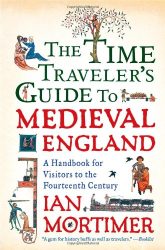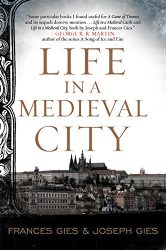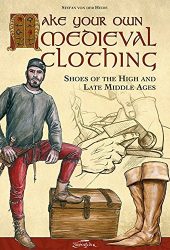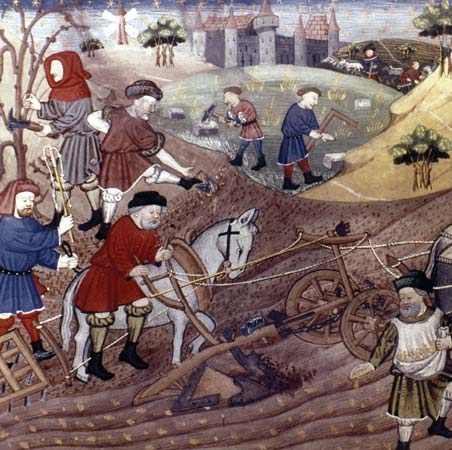
Farmers or Peasants were critically important to medieval life. Most Middle Ages villages had at least a few large arable fields to grow crops (one of three to be left fallow) as well as meadows and common land where peasants could graze their animals.
Medieval farmers used oxen and iron-tipped coulter plows. The fields were ploughed three times: once to turn the stubble over, then to remove the thistles and weeds, and finally to prepare for sowing. Some utilized marl and seaweed as fertilizer. Even though medieval farmers worked incredibly hard, crops could become easily ruined and starvation was not unusual.
History of Farmers
Farming dates back to Neolithic times. The Sumerians already had an agriculture specialized labor force and irrigation crop farming by the year 5,000 BC. Ancient Egyptians also irrigated their water from the Nile, as the practice of agriculture had already expanded to ancient China, Greece, and the Indian subcontinent.
The techniques originally pioneered by the Sumerians were transmitted to the Romans, who laid down the groundwork for the manorial economic system that would eventually evolve into the Middle Ages’ serfdom.
During medieval times, monasteries spread throughout Europe as important centers that collected knowledge about agriculture and forestry. The manorial system facilitated the ownership of land and laborers by large landowners. By the year 900 AD, iron smelting allowed for the production of better agricultural implements such as hand tools, ploughs, and horseshoes. Thanks to the adoption of the mouldboard plough, the forests of Northern Europe were cleared to give way to an increase in agricultural lands – and population.
During the Middle Ages, the watermills initially introduced by the Romans were improved and used to grind grains into flour and process flax ands wool.
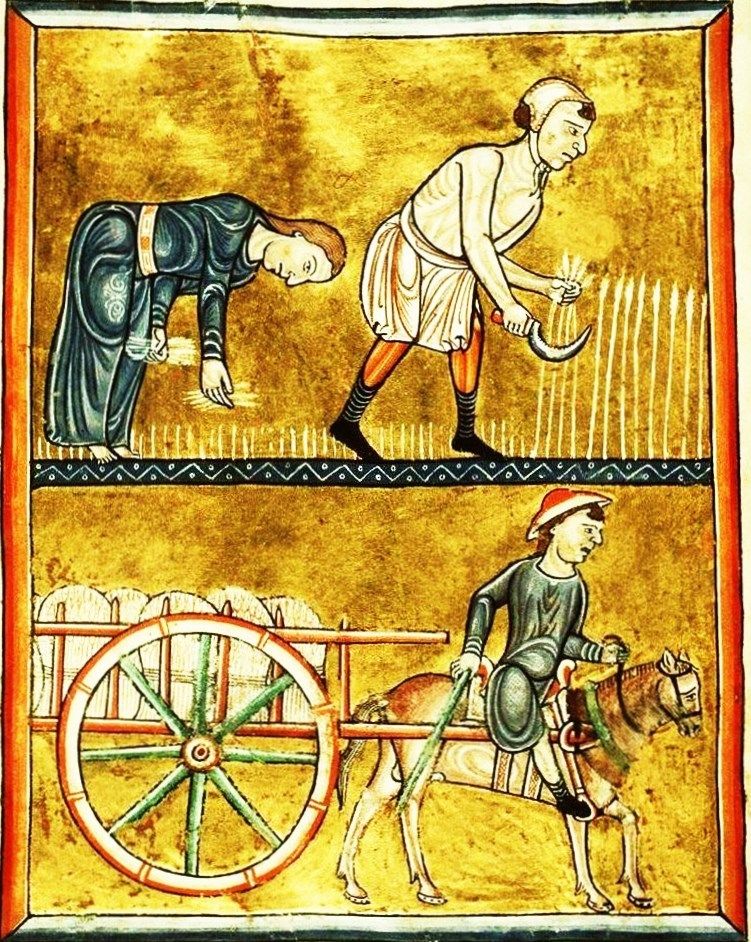
Crops and Tools
Medieval farmers worked with crops such as wheat, rye, barley, and oats (and from the 13th century, peas, beans, and vetches used for fodder or as fertilizer).
Crop yields peaked in the 13th century and remained steady for over 400 years. Unless in exceptionally harsh times, the needs of the population were generally met. The success of a crop depended in large part on luck. In the summer, sun was essential for crops to grow and heavy rain could destroy a harvest. To much sun, and the soil could dry. A frost in spring, and the seeds would die.
Farming tools in the middle ages were generally crude. The most common ones were metal-tipped ploughs that could turn over the soil and harrows to cover the seeds once planted. Beasts of burden like oxen and horses were valuable as farming animals.
Medieval farmers supported each other. It was usual for them to help one another to ensure the vital work got done, especially during ploughing, seeding, and harvesting times.
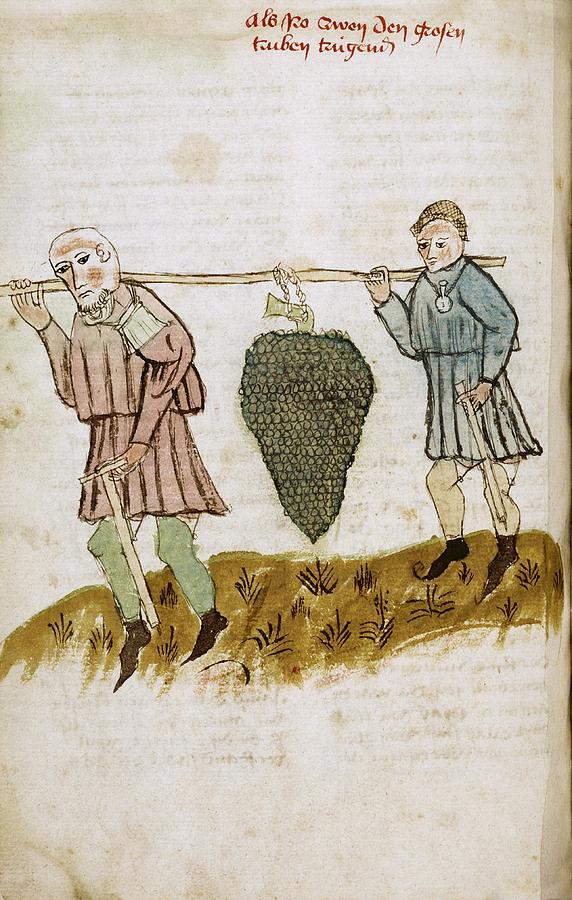
The Feudal System
Medieval farmers depended on the local lord of the manor. This system had been in place since the ‘Dark Ages’ (when people keep a local warrior in luxury in exchange for safety) however it was reinforced by William the Conqueror. In 1086, he sent officials all over England to assess and value the wealth of land and who owned it (the Domesday Book). When Wiliam conquered England, he confiscated the land from the Saxons and gave it to his barons and knights. Peasants received some strips of land from the knights (generally, one of each of the three types), but they had to share their produce and weren’t allowed to leave.
The feudal system gave kings and army (through barons and knights) and constituted a pyramid – at the base of which were the peasants. These farmers did not own the land but were expected to work on one or several strips of land.
Although medieval men depended on a good harvest to survive, on average they were taller (and presumably better fed) than the preceding Roman Empire and subsequent early modern era.
Books about Medieval Life
More Medieval Occupations

Medieval Minstrel
Medieval minstrels sang, played musical instruments, and told engaging stories. Here’s what life was like for a minstrel in the Middle Ages.
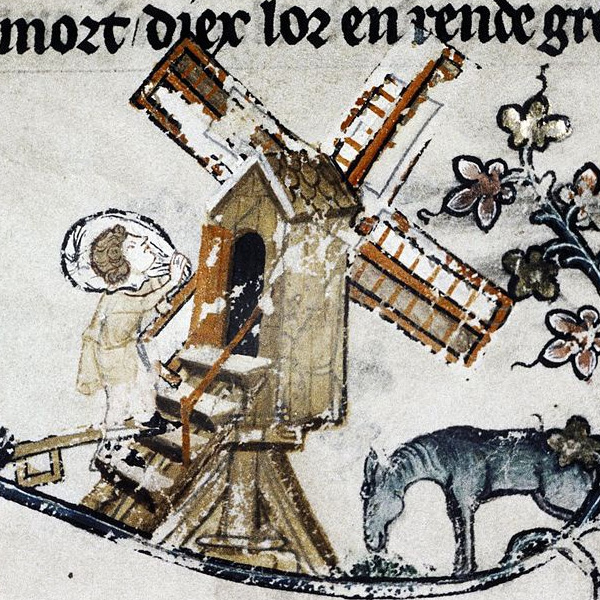
Medieval Miller
Millers were some of the most important tradesmen in the Middle Ages. Learn more about this medieval profession and how millers lived.
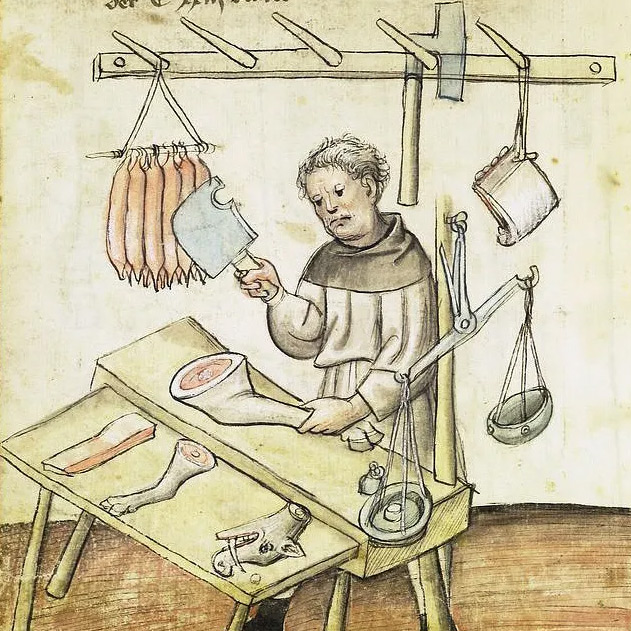
Medieval Butcher
Middle Ages butchers prepared meat, fish, and fowl for the people in a castle or a city. They sometimes had stalls in a marketplace.
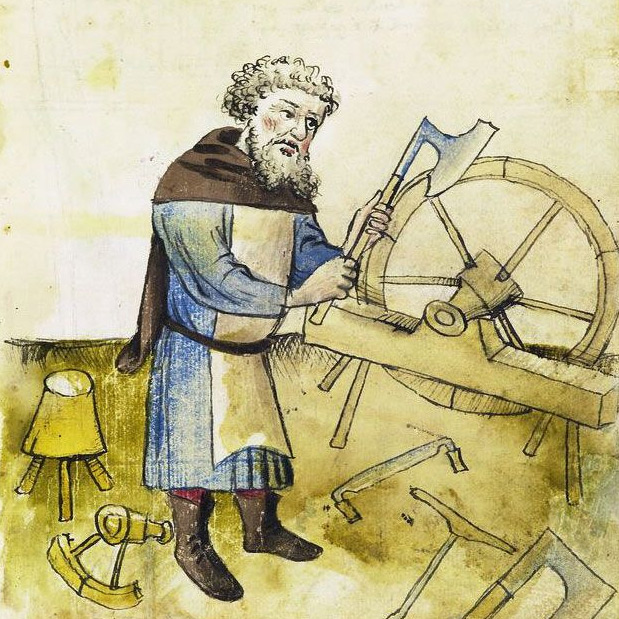
Medieval Wheelwright
Medieval candlemakers made candles from materials such as fat, tallow and beeswax.

Medieval Shoemaker
Medieval candlemakers made candles from materials such as fat, tallow and beeswax.
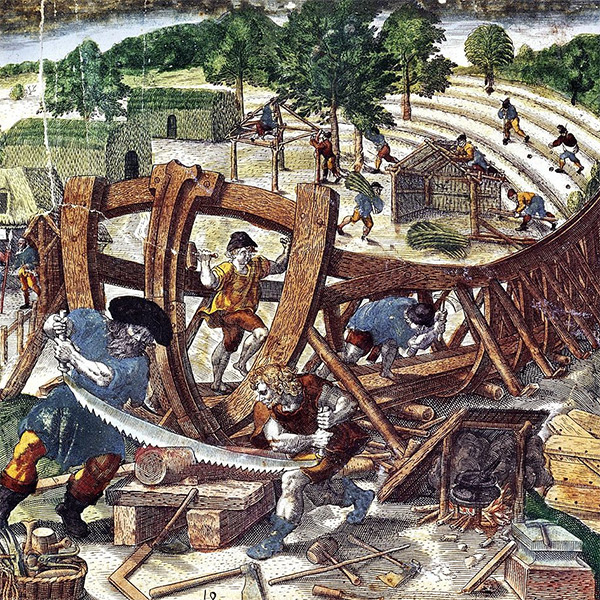
Medieval Shipwrights and Shipmaking
Being a sailor in the middle ages meant living a lonely and difficult life, as they would often set sail for months or even a year at a time.



